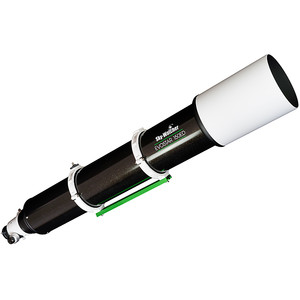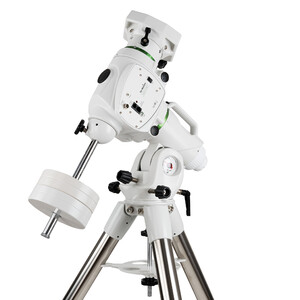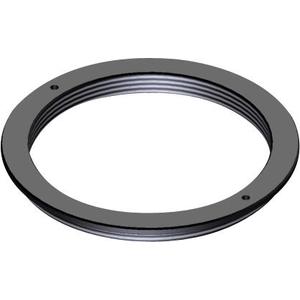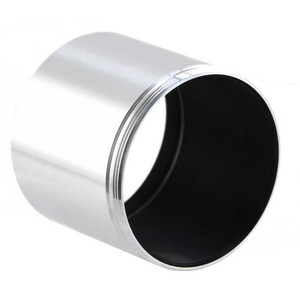Purtroppo, questa descrizione non è stato tradotto in italiano, in modo da trovare a questo punto una descrizione inglese.
Introducing the advanced active optics SX-AO-USB: The SX-AO-USB device provides an effective method of removing the effects of rapid guiding errors from CCD images. All but the most expensive telescope mounts suffer from rapid gear errors during guiding and such errors are very difficult to correct when the only control method available is to send speed corrections to the drive motors. A device that can adjust the image position by rapidly deviating the optical path, can correct for such errors very quickly and without the associated settling time issues. This is called active optics (AO).
A common method of shifting an image for AO purposes is to use a ‘tip-tilt’ mirror to reflect the beam through a variable angle. This works well, but deviates the optical path through 90 degrees and takes up a considerable back focal distance. Its motion sensitivity is also affected by the distance between the mirror and the CCD. A ‘straight though’ device is more convenient and optically shorter.
A secondary advantage of the straight through design is that it is possible to construct a system that has a well defined optical deviation for a defined input signal. This means that the ‘sensitivity’ of the system in pixels shift per input step is essentially constant and is independent of the optical system used and the distance between the CCD and AO.
The AO element is a Multi-coated AR bloomed plane-parallel optical window with a thickness of 13mm and a diameter of 60mm. This element can be tilted by up to approximately +/- 3 degrees. Converging light from the telescope objective lens or mirror, passes through the window on its way to the CCD chip, but is essentially unaffected when the window is perpendicular to the beam. However, when the window is tilted, the converging beam is
displaced by an amount which can be defined as approximately 0.075mm per 1 degree of tilt. The maximum image deviation is therefore approximately +/- 0.15mm in both the X and Y planes. This corresponds to about +/- 23 pixels on the CCD of an SX-825 camera.
Major features:
- Image tracking and stabilisation using a high speed tip-tilt optical window.
- Fast tracking speed of 5mS per increment.
- Overcomes rapid gear errors to stabilise even difficult mounts.
- Mount control output for correcting large drive errors while maintaining AO stabilisation.Image shift factor independent of optical system or camera back-focus spacing.
- Off-axis guider assembly (optional) for use with an SXV guide camera.
- STAR2000 guiding compatible.
- May be used to image stabilise many other makes and types of camera, given suitable control software.
- Clear aperture of 60mm for up to 35mm full-frame size chips.
- Short optical length - 74mm with OAG, 44mm without (add 6mm if front end adaptor is used).
- Very low light loss (~2%) from the multicoated optics.
- Filter threads for adding 48mm narrow band. IR blocking or pollution rejection filters without affecting the guide camera sensitivity.
- USB controlled
- Low power consumption. Less than 600 mA at 12v DC when moving - 50mA quiescent current.
- Compact and lightweight - only 132mm in diameter x 32mm long - less than 700 grams load on the ‘scope.
Items included with the SX-AO-USB:
- SX-AO-USB
- AC Mains Adapter
- USB cable
- Guider Cable
- OAG (optional on QSI version)
- T-Thread Female Adapter - (Telescope Side)
- SCT-Thread Female Adapter - (Telescope Side)
- T-Thread Male Adapter - (Camera Side)
- M72-Thread Male Adapter - (Camera Side)
- CD-ROM - Manual
- Note: Serial Port Cable - Optional extra
The perfect combination: The Trius range of CCD cameras from Starlight Xpress offer a unique advantage over other imaging cameras. With a built in USB2.0 hub in the rear of the camera, all of your imaging setup, the SX-AO-USB, Lodestar X2 and the Starlight Xpress USB filter wheel can all be
controlled through the rear of the Trius camera. This significantly reduces the number of cables running back to the computer helping to keep things organised and helps prevent cable drag and cables being snagged in the dark.
Both the Lodestar X2 (the most sensitive dedicated guide camera on the market), and the Starlight Xpress USB filter wheel are powered and driven
through the USB so no additional power cables are required.




